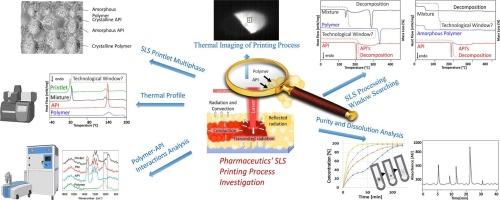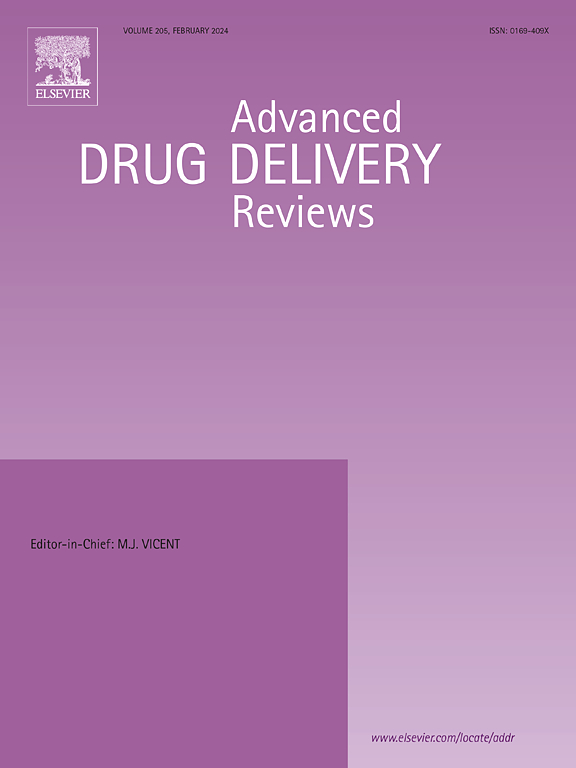Toward pharmaceutical selective laser sintering 3D printing - a thermal and temperature-dependent analysis perspective
IF 17.6
1区 医学
Q1 PHARMACOLOGY & PHARMACY
引用次数: 0
Abstract
The potential advantages of pharmaceutical additive manufacturing (AM) are thoroughly described in the literature. Challenges related to pharmaceutical AM are less discussed. Selective laser sintering (SLS) is one of the AM methods possible for pharmaceutical applications. The article addresses aspects of SLS that are not typically explored in pharmaceutical studies. The literature research was conducted in parallel for both non-pharmaceutical (technical) and pharmaceutical SLS. As a result, in-depth studies on the temperature-dependent properties (rheological and optical) and thermal properties of powders for general technical printing are presented, along with the characterization of the laser sintering process. Special attention is given to the development of the “processing window” and “energy density” terms, as they continue to evolve. An application of a wide range of thermal analysis techniques is presented, including fast differential calorimetry, hot-stage microscopy, thermovision, and dielectric thermal analysis. Next, the complexity, regarding crystalline/semicrystalline/amorphous substances combination and their melt miscibility for pharmaceutical powders is marked. Pharmaceutical SLS studies are also analyzed, with emphasis on thermal aspects. Generally, pharmaceutical studies lack meaningful temperature-dependent and thermal analysis. The only significant exception is studies on drug substance amorphization during the SLS process. The main message is that pharmaceutical SLS should benefit from the methods and ideas developed for technical SLS. In particular, the research directions should include: (1) conscious powder design regarding the specificity of SLS manufacturing method, which completely different from powder compression (API - excipients matching), (2) extending the set of research methods, (3) consolidation process elucidation, (4) powder reusing or powder reusing avoiding, (5) searching for potential new carriers/excipients dedicated to pharmaceutical SLS process.

面向药物选择性激光烧结3D打印-热和温度依赖分析的角度
药物增材制造(AM)的潜在优势在文献中进行了彻底的描述。与制药AM相关的挑战较少被讨论。选择性激光烧结(SLS)是一种可能应用于制药领域的增材制造方法。这篇文章讨论了SLS的一些方面,这些方面在药物研究中通常没有被探讨。文献研究平行进行了非药物(技术)和药物SLS。因此,深入研究了用于一般技术印刷的粉末的温度依赖特性(流变学和光学)和热特性,以及激光烧结过程的表征。特别注意“加工窗口”和“能量密度”术语的发展,因为它们继续发展。介绍了广泛的热分析技术的应用,包括快速差热法、热级显微镜、热视觉和介电热分析。其次,标记了药物粉末中晶体/半晶体/非晶态物质组合及其熔体混相的复杂性。还分析了药物SLS研究,重点是热方面。一般来说,药物研究缺乏有意义的温度依赖性和热分析。唯一显著的例外是对SLS过程中原料药非晶化的研究。主要信息是,药物SLS应该受益于为技术SLS开发的方法和思想。特别是,研究方向应包括:(1)针对SLS制造方法的特异性进行有意识的粉末设计,这完全不同于粉末压缩(API -辅料匹配),(2)扩展研究方法集,(3)巩固工艺阐明,(4)粉末再利用或避免粉末再利用,(5)寻找用于制药SLS工艺的潜在新载体/辅料。
本文章由计算机程序翻译,如有差异,请以英文原文为准。
求助全文
约1分钟内获得全文
求助全文
来源期刊
CiteScore
28.10
自引率
5.00%
发文量
294
审稿时长
15.1 weeks
期刊介绍:
The aim of the Journal is to provide a forum for the critical analysis of advanced drug and gene delivery systems and their applications in human and veterinary medicine. The Journal has a broad scope, covering the key issues for effective drug and gene delivery, from administration to site-specific delivery.
In general, the Journal publishes review articles in a Theme Issue format. Each Theme Issue provides a comprehensive and critical examination of current and emerging research on the design and development of advanced drug and gene delivery systems and their application to experimental and clinical therapeutics. The goal is to illustrate the pivotal role of a multidisciplinary approach to modern drug delivery, encompassing the application of sound biological and physicochemical principles to the engineering of drug delivery systems to meet the therapeutic need at hand. Importantly the Editorial Team of ADDR asks that the authors effectively window the extensive volume of literature, pick the important contributions and explain their importance, produce a forward looking identification of the challenges facing the field and produce a Conclusions section with expert recommendations to address the issues.

 求助内容:
求助内容: 应助结果提醒方式:
应助结果提醒方式:


